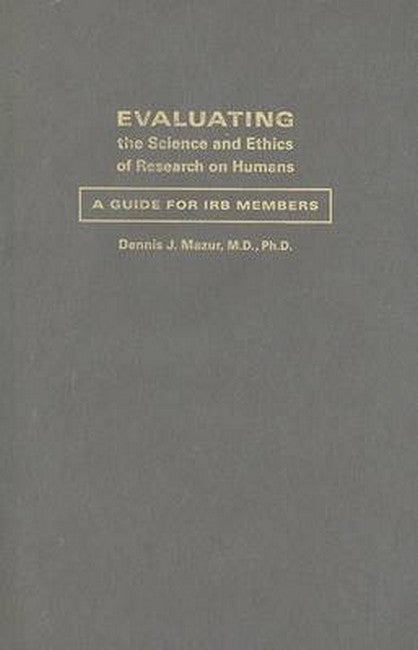PrefaceIntroduction: What Can the New IRB Member Expect?Part I: The IRB, Its Work, and Its Challenges1. What Is an IRB, and What Does It Do?2. Basic Terms and Concepts Used in IRB Work3. What Is Risk?Part II: The Scientific Protocol and the Informed Consent Form4. Prescreening of Proposals5. The Scientific Protocol6. The Informed Consent Form7. Recruitment, Selection, and Compensation of Study Participants8. Research involving Questionnaires and Surveys9. Protection of Participants' Privacy in Research Dataand SpecimensPart III: The Continuing Work of the IRB10. The Ethical Issues of Informed Consent11. Continuing Review, Communication, and Feedback12. Where Are IRBs Making Mistakes, and How Can We Minimize Mistakes?13. Strategies for Managing the IRB Workload and Supporting IRB Decision Making14. Decision-Making Capacity and Accountability in ResearchSummary: The IRB's Key RoleAppendix 1: A Check List for Reviewing a Scientific ProtocolAppendix 2: A Check List for Reviewing an Informed Consent FormNotesWebsite References for Cited DocumentsIndex
Request Academic Copy
Please copy the ISBN for submitting review copy form
Description
""Evaluating the Science and Ethics of Research on Humans: A Guide for IRB Members goes beyond the basics to provide an excellent resource for any IRB member serious about his or her responsibilties. Along with a readable and compact presentation of the information one would expect in a handbook for IRB members, the book addresses [many] subtleties...""

